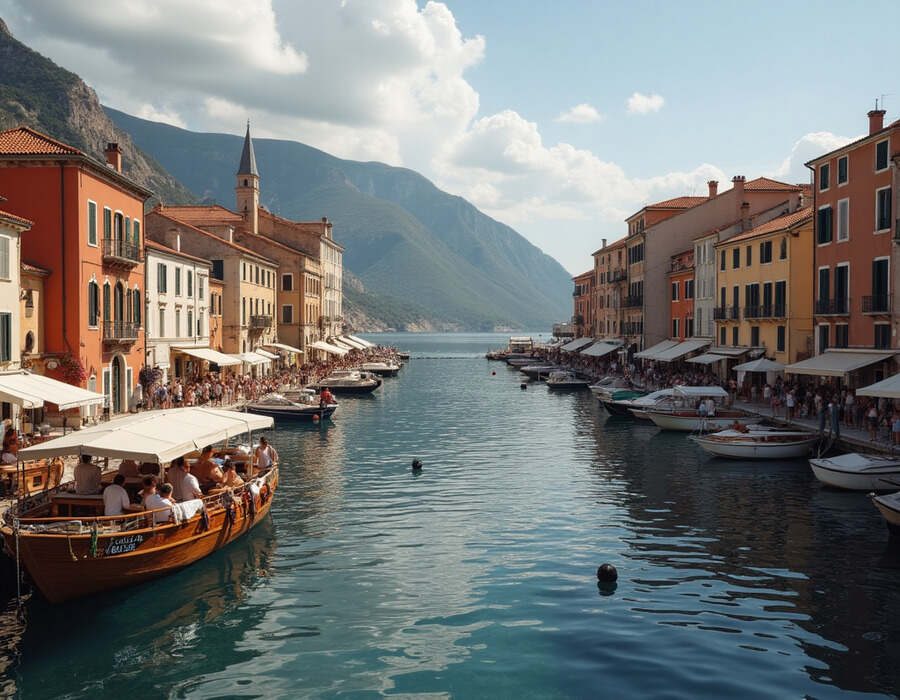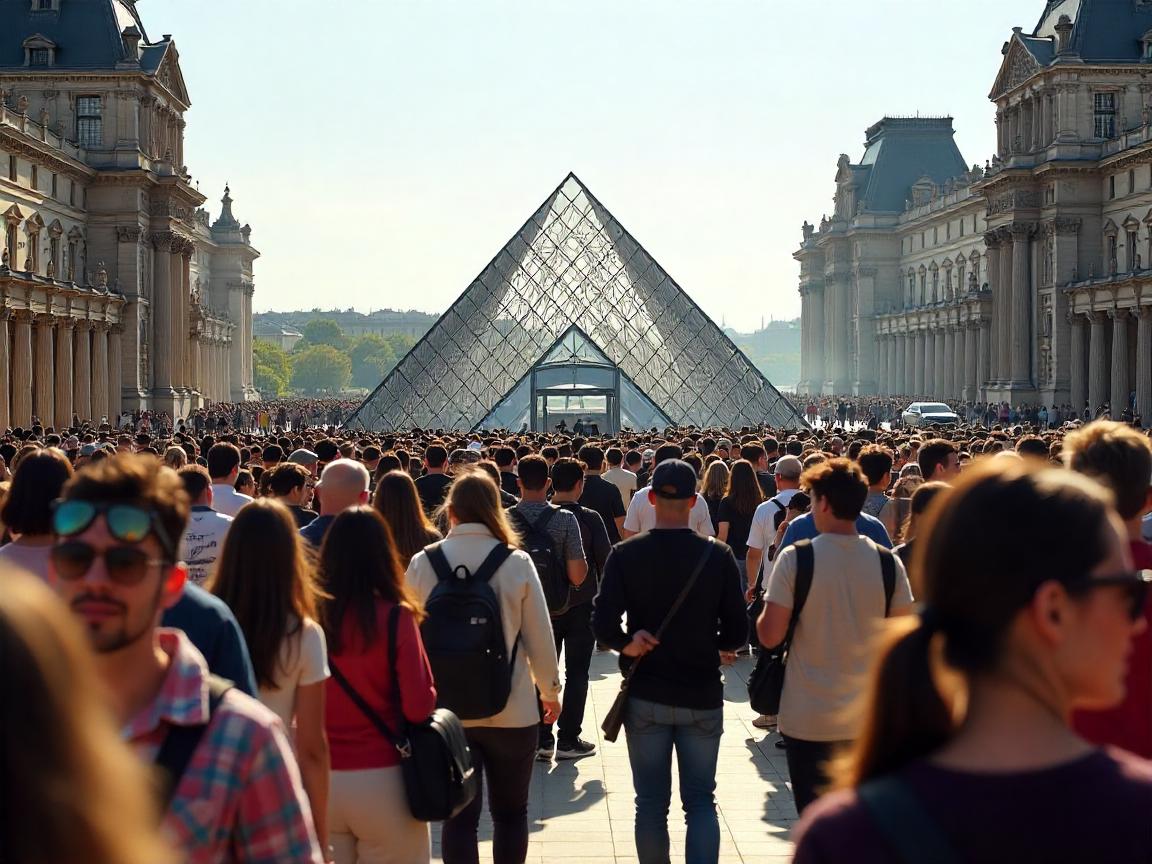≡-Croatia, Greece and Italy Grapple with Surging Tourist Crowds as Dubrovnik, Athens and Venice Face Overwhelming Overtourism Crisis – Viral of Today
<> Viral of Today <>
Home » TOURISM NEWS » Croatia, Greece and Italy Grapple with Surging Tourist Crowds as Dubrovnik, Athens and Venice Face Overwhelming Overtourism Crisis Sunday, June 22, 2025Croatia, Greece, and Italy are at the epicenter of a growing tourism crisis as their most iconic cities—Dubrovnik, Athens, and Venice—struggle to cope with overwhelming visitor numbers. Driven by the rise of low-cost travel, cruise ship traffic, and global media exposure, these historic destinations are facing an unprecedented strain on infrastructure, housing, and cultural heritage. While tourism remains vital to their economies, the scale of arrivals has begun to erode local quality of life, prompting authorities to implement urgent crowd-control measures and sustainability policies in a race to preserve the soul of these beloved cities.Europe’s Busiest Tourist Cities Exposed as Dubrovnik, Venice, and Others Struggle with Overtourism CrisisEurope is home to some of the world’s most iconic travel destinations—but a new report reveals that many of these beloved cities are struggling under the weight of too many visitors. A recent analysis by Holidu, the holiday rental platform, has ranked the continent’s most overcrowded cities by calculating the ratio of annual inbound tourists to the local population. The findings highlight how tourism, while economically beneficial, is reaching unsustainable levels in several European hotspots.At the top of the list is the picturesque Adriatic city of Dubrovnik, Croatia. Known for its medieval charm and seaside allure, Dubrovnik now hosts an astonishing twenty-seven tourists per resident each year. This overwhelming ratio has transformed what was once a tranquil escape into a maze of crowded streets, overwhelmed infrastructure, and inflated housing costs. The global popularity of the Game of Thrones television series, much of which was filmed in the city’s historic center, has only intensified the influx. The show’s global fanbase has flocked to Dubrovnik to walk the same cobblestone alleys and capture selfies along the famed city walls—turning cultural heritage into congested backdrops.In response to the escalating strain, Dubrovnik’s local authorities have introduced a series of crowd-control policies. These include limiting the number of daily cruise ship arrivals, imposing time slots for tour buses, and implementing reservation systems for access to popular landmarks. Despite these efforts, many residents feel sidelined by the changes brought by mass tourism. Property prices have soared beyond affordability, and essential public services are increasingly stretched thin, leading some locals to relocate outside the city.Athens, Greece ranks second in the study, reflecting the broader concerns of overtourism in Southern Europe. Greece’s historic capital, renowned for its ancient landmarks and cultural treasures, has experienced a sharp surge in tourist numbers in recent years. To address the mounting pressures, the Greek government has rolled out multiple countermeasures. These include a cap on cruise ship dockings, the introduction of a climate crisis levy on accommodations, and a revamped tourist tax aimed at preserving the country’s fragile cultural and environmental assets.In third place sits Venice, Italy, one of Europe’s most iconic destinations—and a city long synonymous with the crisis of overtourism. With twenty-one tourists per resident, Venice is quite literally being submerged by its popularity. The city has sunk approximately twenty-five centimeters over the past hundred years, and it continues to subside annually. Rising sea levels and climate change compound the issue, but the sheer volume of foot traffic from visitors only worsens the situation. In response, Venice has taken unprecedented steps, including implementing an entrance fee for day-trippers and encouraging sustainable forms of tourism that protect its delicate ecosystem and dwindling local population.The report underscores several key drivers of overtourism across Europe. Foremost among them are low-cost airlines, which have made weekend city breaks and international travel more accessible than ever before. Additionally, peer-to-peer accommodation platforms like Airbnb have multiplied tourist lodging options, often at the expense of long-term rentals for locals. And perhaps most impactful are cruise ships, which deposit thousands of tourists at once into historic city centers ill-equipped for such surges.While tourism remains a vital pillar of economic activity across the continent, the unintended consequences are becoming increasingly visible—and difficult to ignore. Local communities, cultural heritage sites, and public infrastructure are all under pressure. Cities like Dubrovnik, Athens, and Venice now serve as case studies in what happens when tourism exceeds the capacity of a destination.Experts suggest that the future of travel in Europe will require a more sustainable and regulated approach. This includes encouraging visitors to explore lesser-known destinations, implementing stricter environmental policies, and fostering tourism that benefits both travelers and the communities they visit.Croatia, Greece, and Italy are battling overwhelming tourist surges as Dubrovnik, Athens, and Venice face severe pressure on infrastructure, housing, and heritage. Urgent measures are being taken to protect these iconic cities from the growing impact of overtourism.As travelers plan their next European adventure, they are being urged to consider the broader impact of their footprints. Visiting during off-peak seasons, supporting local businesses, and respecting community guidelines are all small steps that can collectively help preserve the continent’s rich cultural legacy for generations to come.Tags: athens, Croatia, cruise tourism, dubrovnik, greece, Italy, mass tourism, overtourism, sustainable travel, Tourism Crisis, Tourism news, Travel News, Venice
This information will surprise you!
See also
- Read until the end to discover everything.
- Important information you need to know.
- Interesting facts and helpful tips.
Conclusion
Did you enjoy the news? Keep following us daily!













